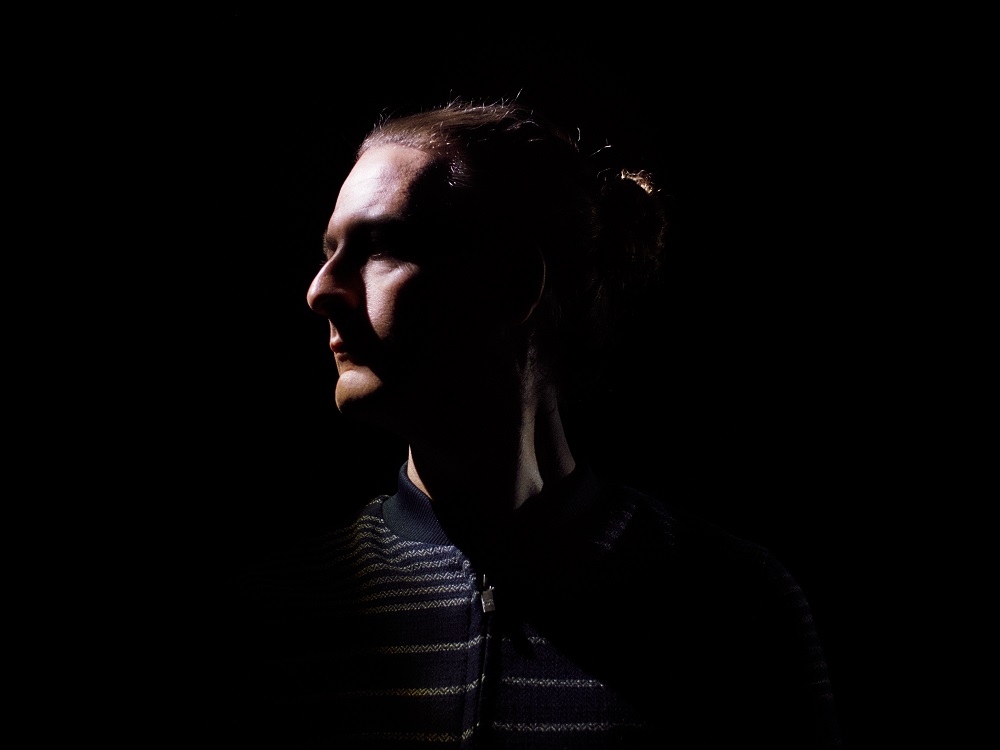Amon Tobin interviews Thijs de Vlieger
First up on Amon Tobin’s list of artists to spotlight in his guest editorship – Thijs de Vlieger

Amon Tobin first picked up on Noisia’s unique drum & bass sound while seeking out shitkicking grooves for his DJ sets, but since then he’s forged a close creative partnership with Thijs de Vlieger (pictured, above) from the trio, and despite being many thousands of miles away from each other, they’ve collaborated on a number of tracks on Noisia’s VISION and Amon’s Nomark labels.
Naturally enough, he was one of the first names that sprang to mind when we asked Amon to suggest who he’d like to cover during his guest editorship of Juno Daily….
Amon: I’ve often thought music gets caught between art and entertainment. sometimes being both and sometimes being neither. more often than not though it’s one or the other as the two things serve different masters. would you say it’s the artist or the listener who decides and where do you see your music sitting on this spectrum?
Thijs: Oh man, what a way to kick the door in. Please define “art”?! There are so many possible definitions of art, some mutually exclusive with each other, some mutually exclusive with entertainment, some defining art as refined entertainment.
I think the intention of the artist is important, but only as far as it manages to translate to the audience. Most art that I like is self-absorbed, as in the artist doesn’t give a shit what the audience thinks and just feels a drive to make their own things. But most artists need to dedicate themselves fully to their work in order to reach their highest possible level. Which means their art needs to pay their bills. Which means someone somewhere needs to pay for their work. Which means that at some point someone needs to be able to clearly read their art’s value.
An artist should challenge their audience’s preconceptions as much as possible without scaring all of them off, I think. Someone somewhere should be able to understand and value the work.
Amon: Do you think there is a link between the monetary devaluation of music and the cultural shift towards casual listening? i.e listening while doing other things rather than listening as an activity in itself.
Thijs: First off a macro observation: Covid and the impossibility to find revenue from live shows has the whole music world reconsidering their modus operandi. This is great. We were collectively forced to reconsider our reactions to and ad-hoc solutions for dealing with the status quo, because they were no longer valid in the new world. People stick to their routines until they don’t work any more. When things change slowly, people adapt, even if they slowly cook like lobsters. But a sudden change will have them drastically questioning the foundations and whether they’re still valid in the new world. This is a positive outcome of a not-so-positive situation.
As to your question: I would like to see data about active vs casual listening. I would not be surprised if the amount of active listening and it’s ratio vs casual listening hardly changed. Casual listening used to be the radio. Now you can make your own radio station with streaming without having to buy all those records, and change it with your mood. Convenient.
But what did absolutely change, is that for those people that do dedicate their time to active listening everything became much cheaper. While those listeners would probably be willing to spend more. I wonder what the venn diagram of active listeners and vinyl collectors looks like. Probably a big overlap although collecting music does not precisely equal active listening.
I have a feeling that new, exclusive platforms will evolve that focus on active listening vs casual listening, active listeners leaving Spotify or keeping it for convenience, but becoming members of separate services that do a better job of meeting the expectations and identities of people who consider themselves active listeners. And Spotify etc will stay around for casual listening and easy access to the world’s catalog.

Amon: do you think there’s a link between casual listening and casual production? i.e. music which is transient in value and appropriately disposable as implied by the nature of streaming platforms?
Thijs: Yes, sure. It’s problematic that both “art-music” and “easy-listening-music” are finding themselves competing against each other to find their audience through the same algorithms. Again, this is why I think new platforms will evolve. So that the music that isn’t designed to confirm identity but to challenge it does not get put in the same basket as “lazy music”, and doesn’t get judged by the same numbers.
if you had a car accident and weren’t insured.. and as a result were bankrupted by hospital bills.. which lead to a daytime drinking habit, chronic depression and eventually homelessness… what’s the one synth you’d keep?
I hate to be *that guy* that doesn’t really answer the question… But in that situation I think I’d sell them all. I need a few different flavors of hardware. Keeping only one “jack-of-all-trades-synth” (in my case the Novation Summit) would only frustrate me, I think… Also, how does one keep a synth when homeless? Solar panel, car battery, and a synth in a shopping cart? That sounds kinda attractive actually. Synth troubadour..
Amon: Do you think 2020 might have been more bearable if people like us had stopped broadcasting how much fun we were having in our studios?
Thijs: I think a lot of artists are introverts, using their craft as a stunted way to relate to the world and to other people. But music isn’t just genius composers and audiences understanding and chin-strokingly appreciating the brilliance of the compositions. I would go as far as saying that music’s “Main Objective” is to bring people together, to function as identity/social glue for groups of people. Music students sitting at home dissecting music and writing essays about it, or socially challenged nerds feeling all the things in the music at home in isolation, they’re valid parts of music culture. But music doesn’t just project outwards. It facilitates interaction. I think in music the main dish is shared experience, and for the foreseeable future this will be in shows.
Physical reality has so much detail that we don’t have in digital experience yet (micro gestures in body language and facial expressions, smells, acoustic details, there are so many crucial details of human experience we aren’t able to translate to digital experiences yet. So until the VR experience resolution is increased by about a hundredfold, music’s main “objective” is to bring people together in physical reality.
I think making brilliant detailed music in the studio is very important, and should be incentivised. But in the end it needs to be a part of a shared experience, somehow.
So introverts got a break in 2020. But for most of us, even though sitting in the studio is very comfortable, it’s important that we get back to doing shows. Because at shows people can really connect to the music (and to each other), and this is a vital element of music.
There are some edge cases imaginable where art can be a selfish experience, for instance how watching a really good movie at home by yourself can make you reflect and change your perspective. Where the art was projected to you, there was no interaction at all, just one-way traffic. But I think 90% of the value of music is in a social setting. And that means that 90% of the (monetary) valuation will remain in shows / other shared physical experiences. Sorry, introverts!
Amon: how are babies both fascinating and boring at the same time?
Thijs: Isn’t it terrible to think that everyone was a crying helpless ball of meat and gluey bones once? Beethoven, Napoleon, Gandhi, every evil person in the world, born a loud and clumsy but also kind of cute sack of cells that would die in a day without supervision of a responsible adult..

Amon: Do you see NFT’s as a fad or a viable road to sustainability in music?
Thijs: NFT’s represent a world of possibility for me. In the end an NFT is a unique string of characters assigned to a unique address, so it’s a unique item on a block-chain that you can have in your wallet. The current focus on auctioning them is a bit lame, as much of the “content” that the strings of characters refer to is lame. But there’s also really cool stuff being made, that might actually rise in value rather than rapidly become worthless once the initial hype lays off, because it’s really well made, thoroughly considered, and representing of a world of ideas much bigger than just a cool 3d render of something funny with some kind of crypto logo in it.
What NFT’s did in February 2021 was both good and bad: they caught headlines. I think smart contracts are much more exciting than NFT’s, but they’re part of the same blockchain ecosystem, and I think this ecosystem is very exciting and will become very important in every facet of life in the 21st century. We’re really only at the start of this development! So don’t judge a book by its cover. The book hasn’t even been written yet, we’re just in chapter 1.
Amon: Do you ever read reviews of your own music and if so how would you characterize the experience of someone describing something you made back to you?
Thijs: I love reading a review that makes me think “ahh they got it”. Shooting music into a vacuum (Spotify) and only hoping that people understand the intentions is not satisfying at all. Maybe a “better artist” wouldn’t really give a shit whether people understand it or not, but I do.
Amon: Who the fuck is satoshi?
Satoshi is a common first name in Japan. The Satoshi I think of now is the pseudonym “Satoshi Nakamoto”, the anonymous person that designed and published Bitcoin, and with that, the idea of a crypto-currency. They (unknown who it is, so impossible to gender them) wanted to design a store of value that wasn’t susceptible to central banks and hypercapitalist speculative misbehavior. Ironically, the great increase in value between March 2020 and February 2021 (4000 to 64000 dollars) was largely caused by speculators and traditional finance institutions buying Bitcoin as investment, the very thing it was designed to protect against. The idea of crypto-currency is amazing: to have all transactions visible in public, and every new transaction can only get verified if the history of all previous transactions is also verified, which makes it impossible to change the books and makes it impossible to lie on the chain. I hope music rights will be managed on blockchains soon.
Currently all we can do is trust institutions that they’re not lying to us, and that nobody is stealing from us. But if someone on the inside would be changing numbers and pocketing the difference, there would be no viable way for us to tell.. There are so many applications possible for decentralised immutable ledger databases, I really hope that the world will start using it more. I’m pretty sure we will. Bitcoin, or another version. As long as it’s decentralised, and completely public, so that no one owns the server it’s run on, and any transaction can be inspected by anyone with an internet connection.